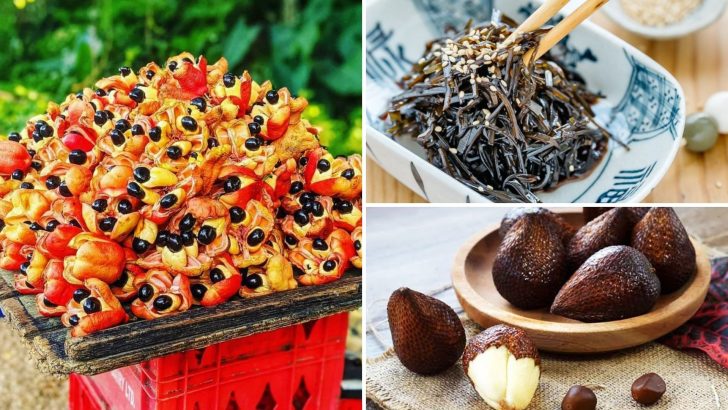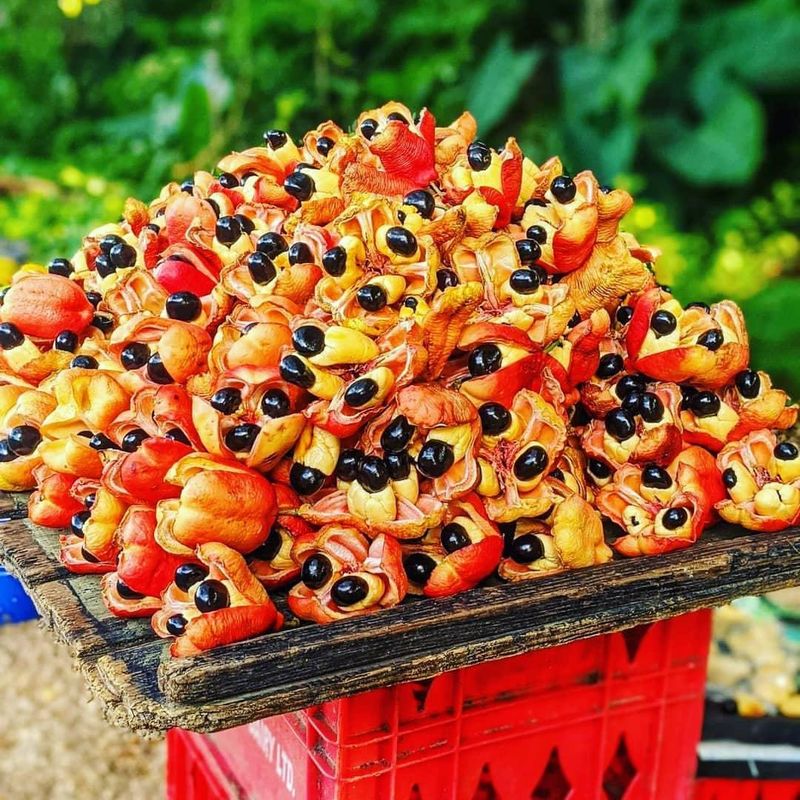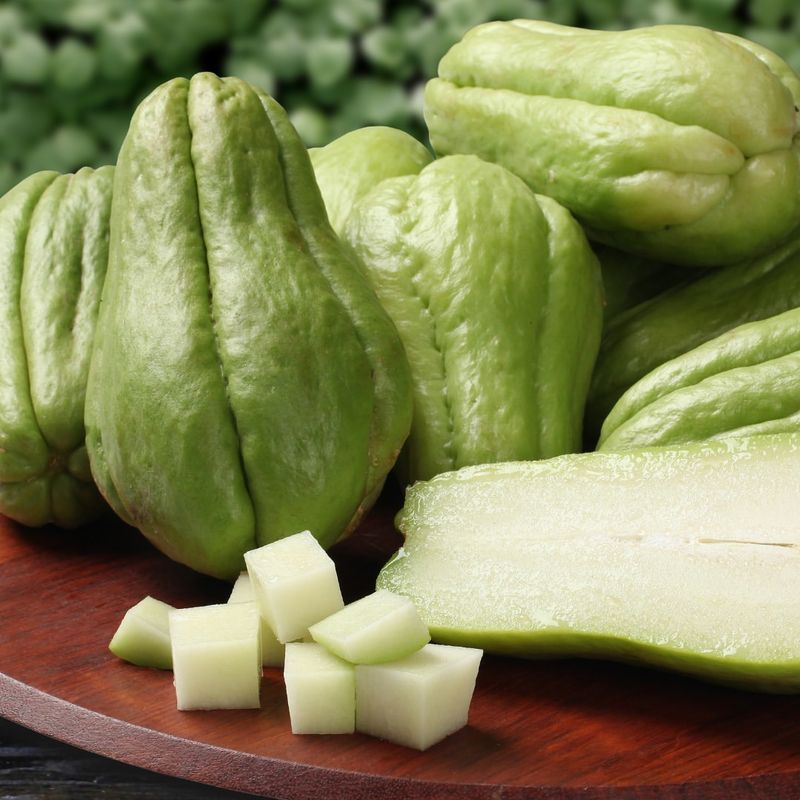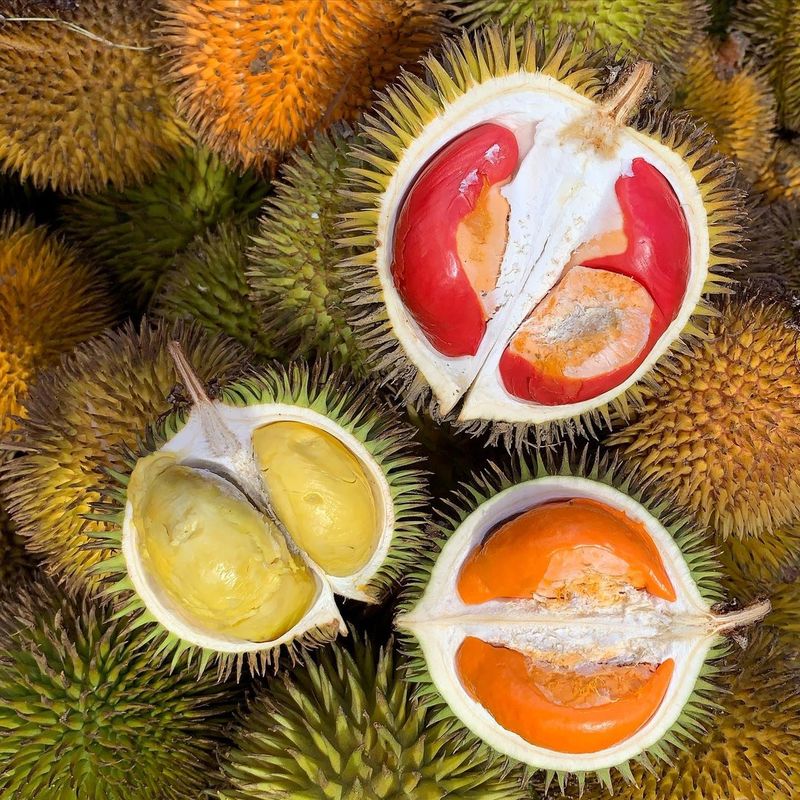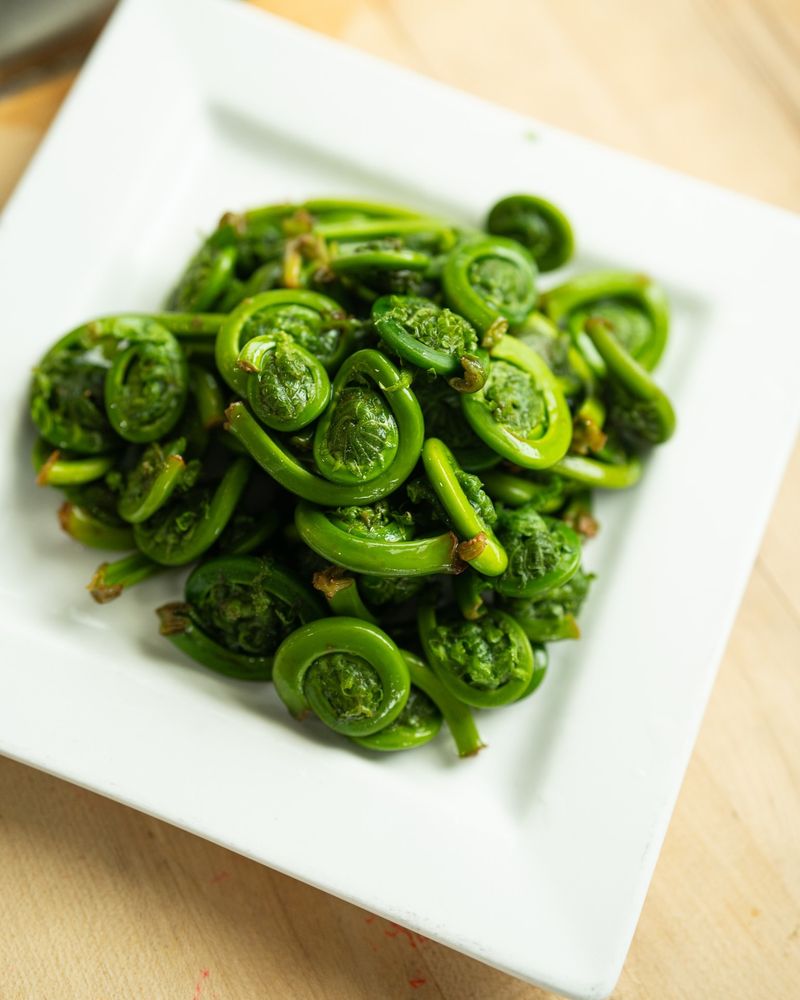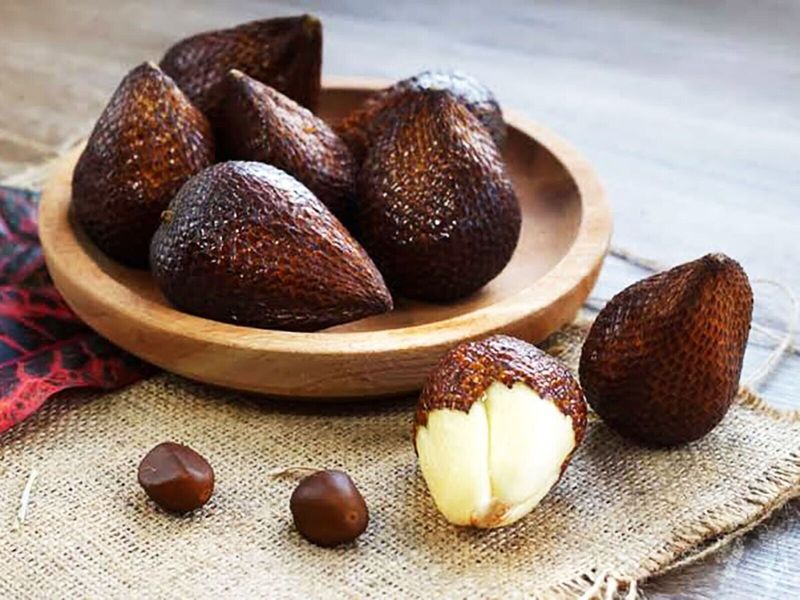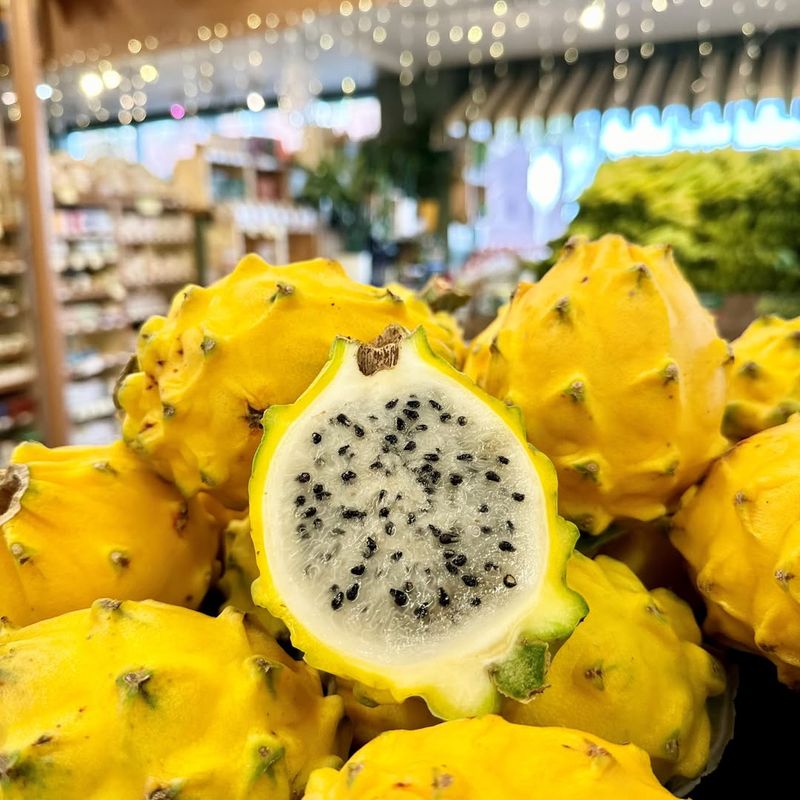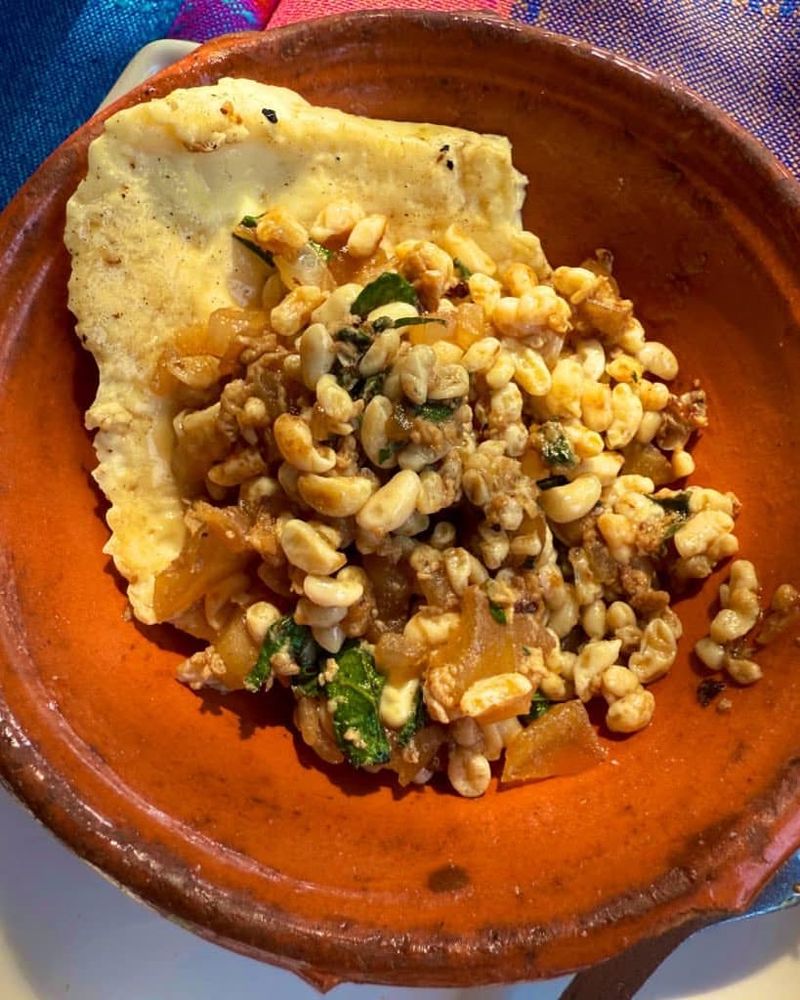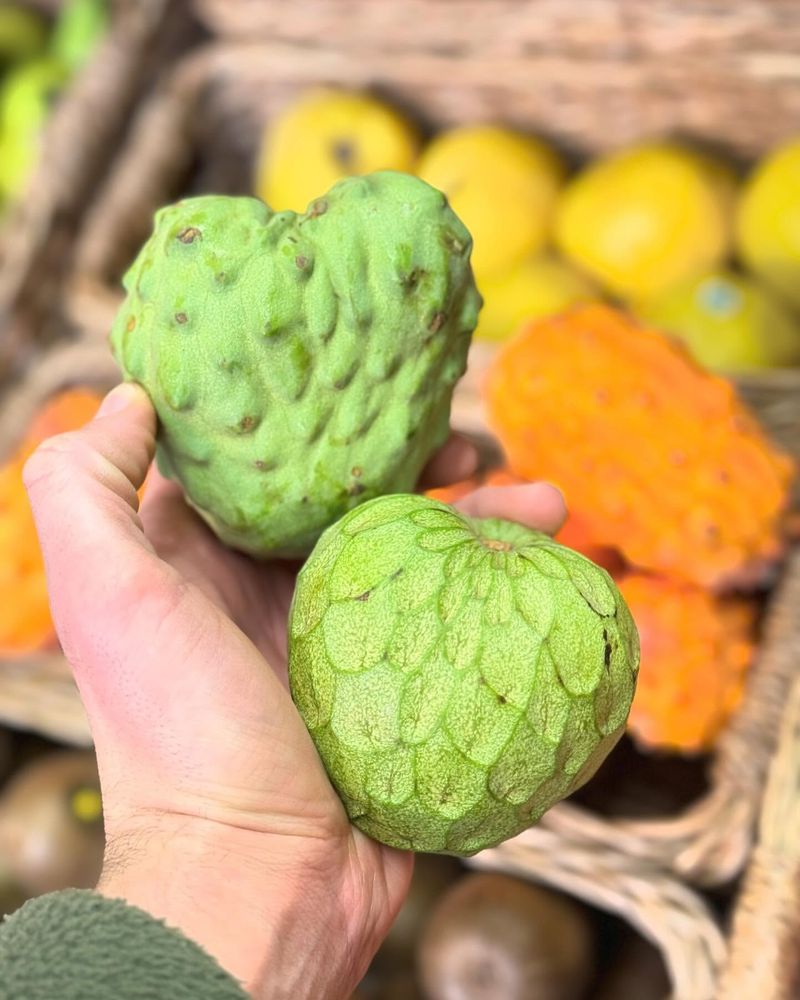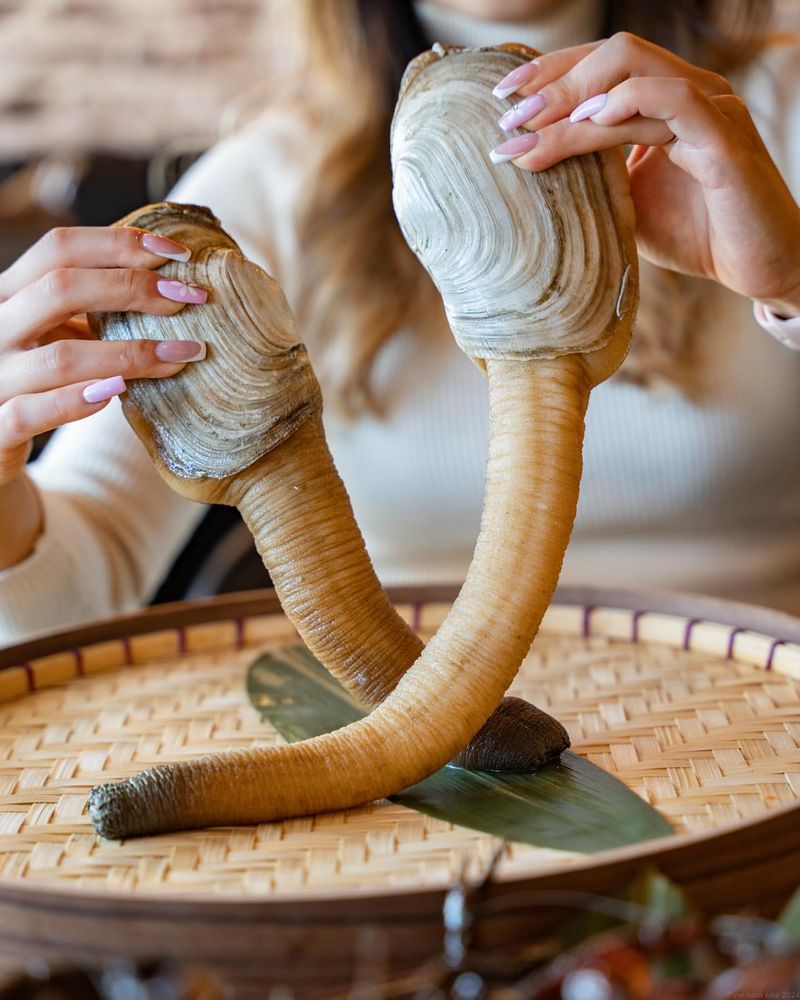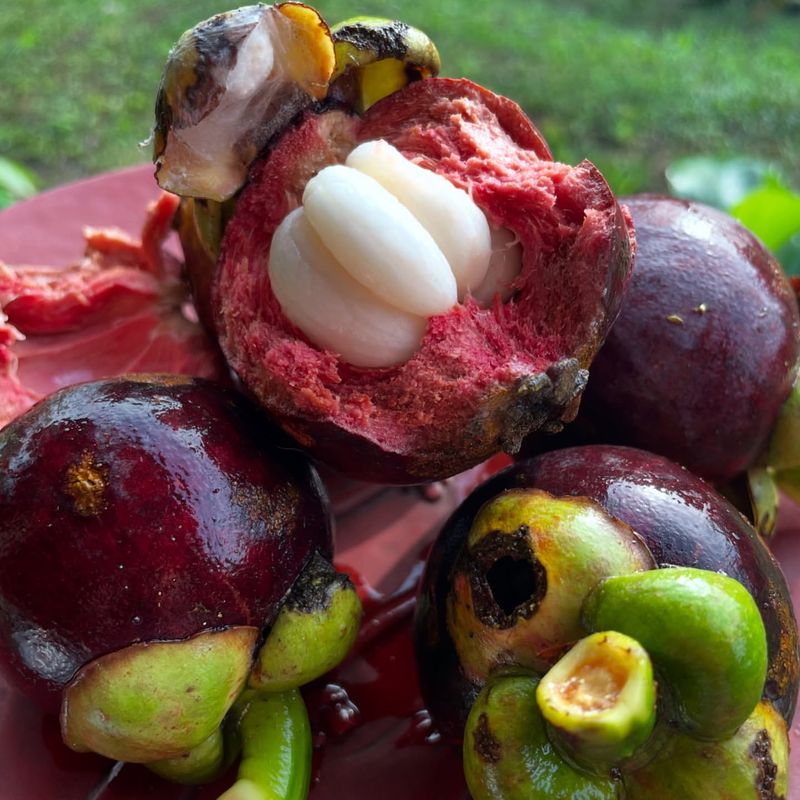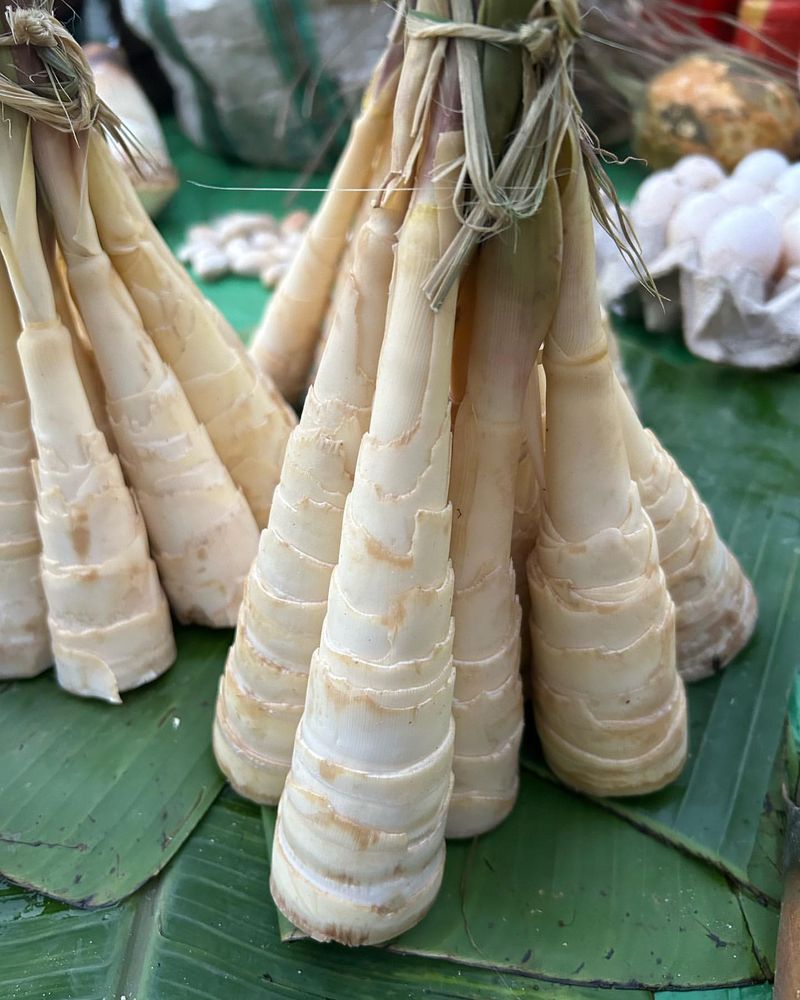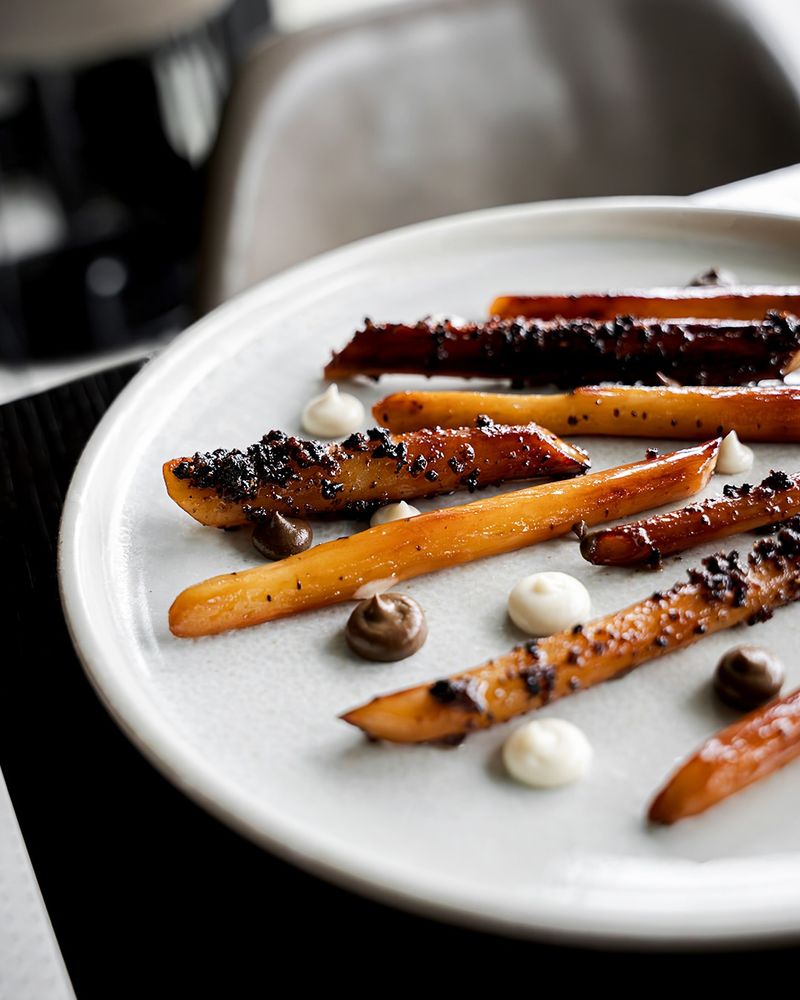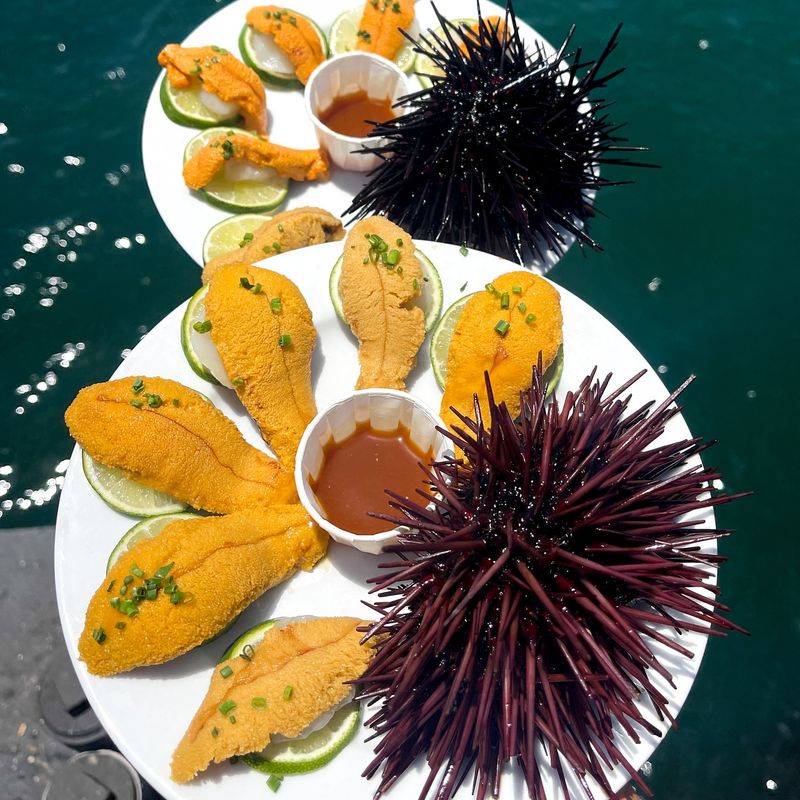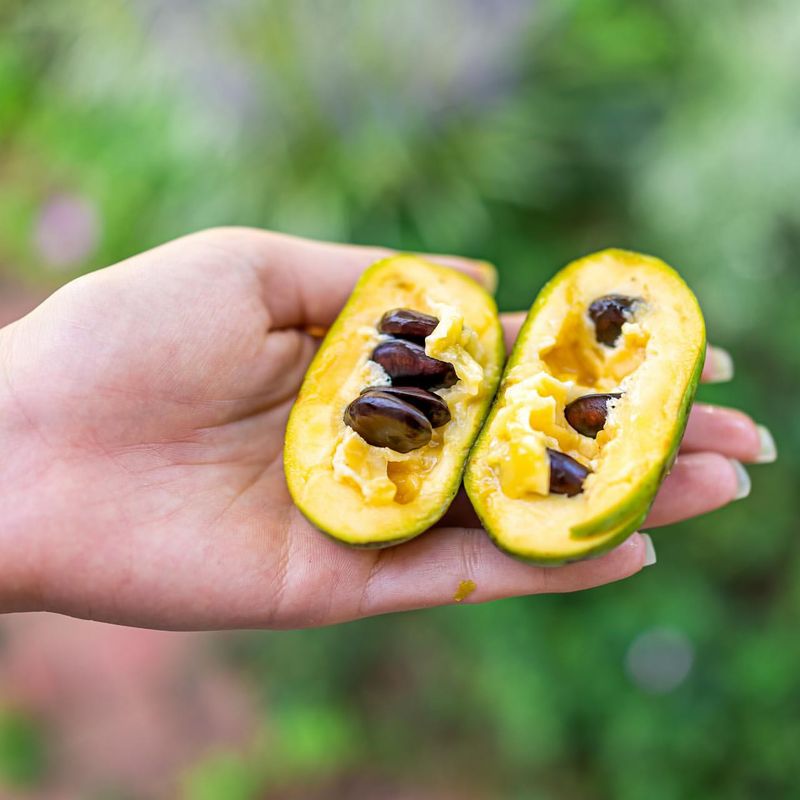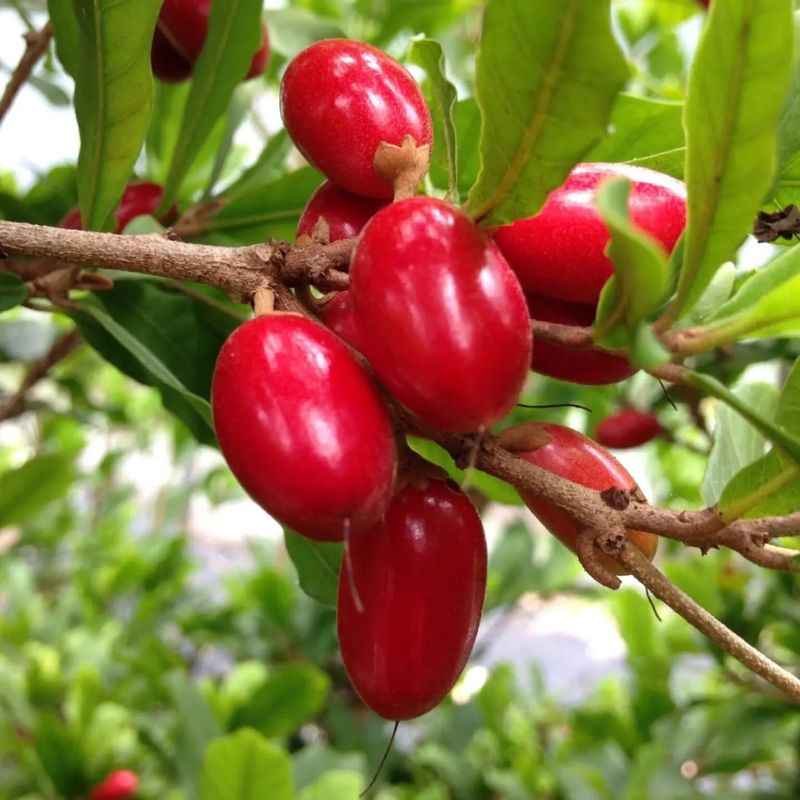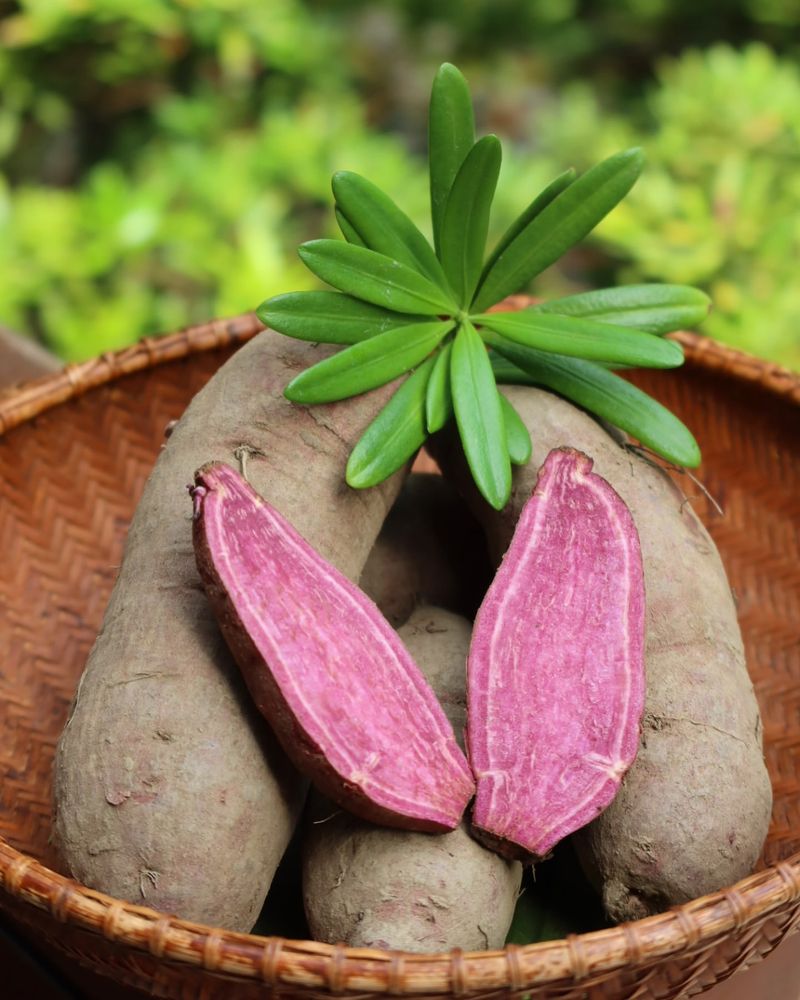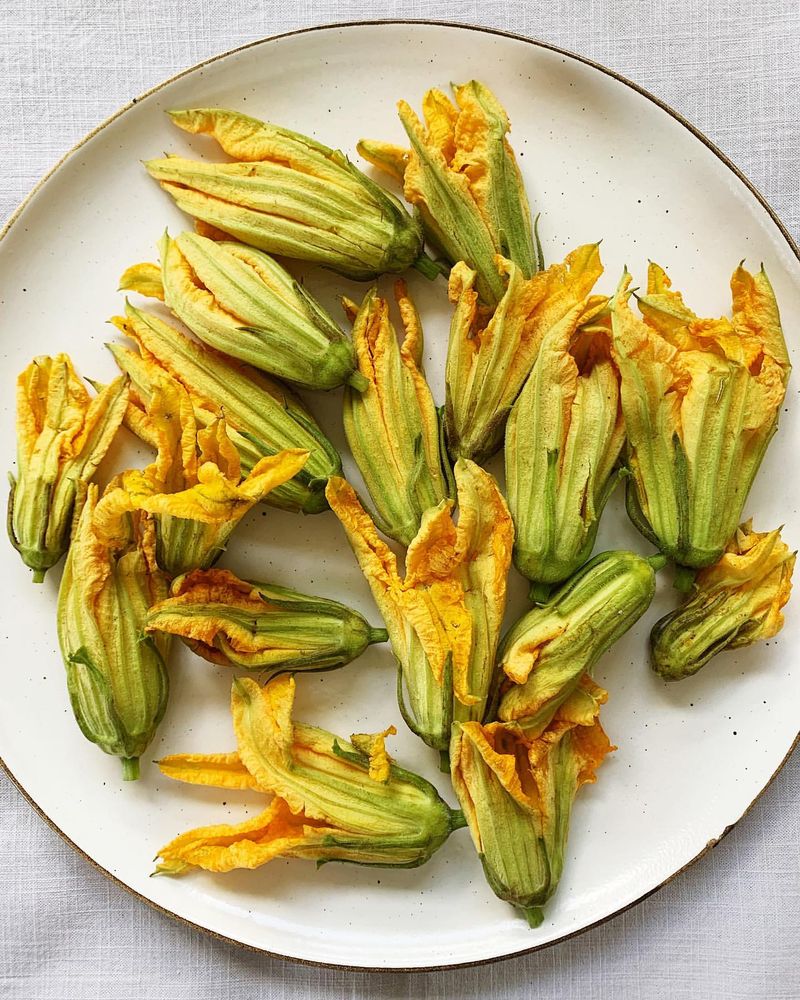Get ready to embark on a culinary adventure like no other! We’ve uncovered 25 deliciously surprising foods you’ve probably never heard of, but trust us—they’re worth seeking out!
From unique snacks to exotic dishes, these hidden gems will have you questioning why they weren’t part of your menu sooner. Get ready for a taste adventure that’s anything but ordinary!
1. Ackee
Perhaps you’ve never heard of ackee, a fruit native to West Africa but widely consumed in Jamaica. If you’re a fan of creamy textures, this fruit might become your new favorite. However, it’s essential to cook ackee properly, as it’s toxic when raw.
Typically served with saltfish, it’s a breakfast staple in Jamaica. Why not try preparing it with sautéed onions and peppers for an authentic taste? Remember, its buttery consistency and mild flavor make it versatile.
2. Chayote
Chayote, a curious vegetable resembling a wrinkled pear, comes from Mexico and Central America. Its crunchy texture and mild taste make it perfect for various dishes.
Have you considered using it raw in salads or cooked in stews? Given its versatility, chayote can absorb flavors well. Hence, it pairs beautifully with spices and herbs. For a delightful twist, why not try it grilled? A squeeze of lime can elevate its subtle flavor, offering a refreshing bite.
3. Kangaroo Meat
Kangaroo meat might seem exotic, but it’s a low-fat, high-protein delight worth trying. This Australian specialty offers a gamey flavor akin to venison or buffalo. When cooked right, it becomes tender and juicy.
Consider marinating it with native herbs like bush tomatoes for an authentic taste. The meat’s leanness requires careful cooking, but its unique taste is rewarding. Embrace the bold flavor and enjoy an Aussie culinary treasure.
4. Durian
Durian is known as the “king of fruits” in Southeast Asia, revered for its creamy texture and pungent aroma. Though its smell can be off-putting, those who brave a taste often find it rewarding.
Are you adventurous enough to try it? If so, prepare yourself for a rich, custard-like experience. It’s often eaten fresh or incorporated into desserts. While challenging to describe, it’s a blend of sweet, savory, and slightly bitter flavors. Dive into this bold fruit, if you dare.
5. Fiddleheads
Fiddleheads, the young fronds of ferns, are a seasonal delicacy in parts of North America. Their unique spiral shape and earthy flavor make them a sought-after treat. When properly cooked, they offer a taste reminiscent of asparagus and spinach.
Why not try sautéing them with garlic and lemon for a refreshing side dish? If you’re new to fiddleheads, ensure you boil them first to remove any bitterness. Enjoy the fleeting season of these curly green gems while you can.
6. Salak
Salak, also known as snake fruit, is native to Indonesia, with its distinctive scaly skin resembling a snake’s. Inside, the fruit offers a crisp texture and a sweet, slightly acidic flavor. If you’re curious about exotic fruits, salak is a must-try.
Its refreshing taste makes it a popular snack. Given its unique appearance and taste, salak is both a visual and culinary delight. Experience a taste of Indonesia.
7. Huitlacoche
Huitlacoche, a fungus that grows on corn, might not sound appetizing, yet it’s a delicacy in Mexican cuisine. Often referred to as “corn truffle,” it boasts an earthy, umami-rich flavor. Traditionally used in quesadillas or tacos, it adds depth to any dish.
For those willing to experiment, huitlacoche offers a unique culinary experience. Its flavor, similar to mushrooms, pairs well with cheese and spices. Venture into a world of Mexican flavors.
8. Pitaya
Pitaya, commonly known as dragon fruit, captivates with its striking appearance and subtle flavor. Native to Central America, it’s now grown in many tropical regions. Its mildly sweet taste and crunchy seeds make it ideal for fruit salads or smoothies.
With its vibrant colors, it adds visual appeal to any dish. Though subtle in flavor, pitaya offers a refreshing and nutritious experience. Embrace the exotic allure of dragon fruit.
9. Escamoles
Escamoles, often dubbed as “insect caviar,” are ant larvae considered a delicacy in Mexico. Though the idea of eating insects might be unsettling, escamoles offer a surprisingly nutty and buttery flavor.
Typically sautéed with butter and spices, they become a gourmet treat. For the daring, escamoles provide a unique culinary adventure. Despite their unusual origin, they are a prized ingredient in Mexican gastronomy. Experience a hint of luxury with this traditional dish.
10. Kombu
Kombu, a type of seaweed, is an essential ingredient in Japanese cooking, particularly in dashi broth. Its umami-rich flavor enhances soups and stews. While its taste may be subtle, it imparts depth and richness to culinary creations.
Hence, it’s a key component in Japanese cuisine. For those seeking to explore Asian flavors, kombu is a must-try. Embrace the sea’s bounty and discover the savory world of this versatile seaweed.
11. Cherimoya
Cherimoya, often called the “custard apple,” entices with its creamy texture and tropical flavor. Native to South America, this fruit boasts a blend of banana, pineapple, and bubblegum notes.
When ripe, its flesh is soft and luscious. How about enjoying it as a dessert or smoothie ingredient? Despite its exotic appearance, cherimoya offers a familiar sweetness that’s irresistible. Savor the creamy taste of this tropical treasure.
12. Geoduck
Geoduck, pronounced “gooey-duck,” is a giant clam native to the Pacific Northwest. Its unique appearance and sweet, briny flavor make it a prized delicacy. Geoduck can be enjoyed raw as sashimi or lightly cooked.
Its firm texture and oceanic taste are unforgettable. Though it might look intimidating, this clam offers a taste of the sea like no other. For seafood lovers, geoduck is a must-try, offering an authentic taste of the ocean.
13. Umeboshi
Umeboshi, pickled Japanese plums, pack a punch with their intense sour and salty flavor. Though an acquired taste, they’re cherished in Japan for their digestive benefits. If you’re looking to try something bold, umeboshi might surprise you.
Often enjoyed with rice, they add a burst of flavor. Despite their tartness, they’re beloved for balancing meals. For the adventurous palate, umeboshi offers a unique taste experience. Dive into the world of Japanese pickles and savor their distinctive flavor.
14. Mangosteen
Mangosteen, hailed as the “queen of fruits,” delights with its juicy and fragrant segments. Native to Southeast Asia, it offers a perfect balance of sweet and tangy flavors. Its luscious texture makes it a refreshing treat.
Despite its tough rind, the fruit inside is tender and delectable. For those seeking exotic flavors, mangosteen is a delightful discovery. Embrace the tropical allure of this regal fruit.
15. Rambutan
Rambutan, with its hairy shell, resembles a sea creature more than a fruit. Yet, inside lies a sweet, juicy surprise. Native to Southeast Asia, this fruit offers a flavor akin to lychee. The translucent flesh is both refreshing and satisfying.
Despite its unusual appearance, rambutan is a popular snack across tropical regions. For an exotic treat, enjoy this fruit on its own or in desserts. Discover the hidden sweetness beneath its wild exterior.
16. Bamboo Shoot
Bamboo shoots, the tender new growth of bamboo plants, are a staple in Asian cuisine. Their crunchy texture and mild flavor make them versatile in various dishes. These shoots absorb flavors well, enhancing any meal.
Despite their humble appearance, they offer a delightful crunch. For a taste of Asian culinary tradition, bamboo shoots are a must. Whether fresh or canned, they bring a touch of authenticity to your cooking.
17. Salsify
Salsify, often dubbed the “oyster plant,” surprises with its subtle seafood flavor when cooked. Though it looks like a humble root vegetable, it transforms into a gourmet ingredient. Its creamy texture lends itself well to various preparations.
For those curious about unique vegetables, salsify offers a rewarding culinary exploration. Despite its appearance, it provides a delicate taste that’s worth discovering. Embrace this hidden gem of the vegetable world.
18. Sea Urchin
Sea urchin, or uni, is a seafood delicacy prized for its rich, buttery flavor. Found in coastal waters, it’s often enjoyed as sushi or sashimi. Are you intrigued by its bold taste? The creamy roe offers a burst of oceanic flavor.
While it might be an acquired taste, it’s beloved by seafood enthusiasts. For an indulgent experience, savor sea urchin on its own or paired with delicate dishes. Discover the luxurious taste that makes uni a sought-after delicacy.
19. Pawpaw
Pawpaw, an American fruit, intrigues with its tropical flavor reminiscent of banana and mango. Often overlooked, it’s a hidden gem among fruits. When ripe, its custard-like flesh is a delightful surprise. Enjoy it fresh or in desserts for a taste of the tropics.
For fruit enthusiasts, pawpaw offers a unique and satisfying experience. Despite its rarity, it provides a sweet escape into exotic flavors. Savor the mystery of this American treasure.
20. Miracle Fruit
Miracle fruit, a small berry from West Africa, has the unique ability to alter taste perceptions. When consumed, it makes sour foods taste sweet. How intriguing is that? Its effects are temporary but impressive. Imagine lemons tasting like candy!
If you’re curious about culinary magic, miracle fruit is a must-try. Despite its small size, it offers a big surprise. For those seeking an unforgettable experience, this berry promises a fun and flavorful adventure. Embrace the wonder of changing tastes.
21. Purple Sweet Potato
Purple sweet potatoes, with their striking hue, offer more than just visual appeal. Their naturally sweet flavor and creamy texture make them a favorite in desserts and savory dishes. They add color and nutrition to any meal.
Despite their vibrant color, they’re versatile and easy to cook. For a twist on traditional potatoes, purple sweet potatoes are a delicious choice. Enjoy their rich taste and embrace a colorful culinary experience.
22. Black Sapote
Black sapote, known as the “chocolate pudding fruit,” fascinates with its dessert-like flavor. Native to Central America, it offers a unique taste experience. When ripe, its flesh is smooth and sweet. Enjoy it on its own or as a dessert ingredient for a guilt-free treat.
Despite its name, it contains no chocolate, yet its flavor is indulgent. For a healthy twist on dessert, black sapote is a must-try.
23. Kaffir Lime
Kaffir lime, with its distinctive bumpy skin and aromatic leaves, is a staple in Southeast Asian cooking. Its intense citrus flavor enhances curries and sauces. They impart a unique fragrance and taste.
While the fruit itself is often too bitter to eat, its zest and leaves are culinary treasures. For lovers of bold flavors, kaffir lime offers a taste of Southeast Asia in every bite. Discover the zest of exotic cuisine.
24. Squash Blossoms
Squash blossoms, the edible flowers of squash plants, are a delightful addition to any meal. Their delicate texture and mild flavor make them perfect for stuffing or frying. They add elegance and taste to dishes.
Even though they are fragile, they’re easy to prepare and enjoy. For a touch of floral beauty on your plate, squash blossoms are a wonderful choice. Embrace the delicate nature and savor the subtle flavor they bring.
25. Persimmon
Persimmon, with its brilliant orange hue and sweet, honey-like flavor, is a fall favorite. Native to East Asia, it offers a taste reminiscent of apricots and plums. When ripe, its flesh is soft and luscious.
For a taste of autumn’s bounty, enjoy persimmons fresh or in baked goods. Despite their seasonal nature, they provide a sweet and satisfying flavor. Embrace the warmth of persimmons in your kitchen.

